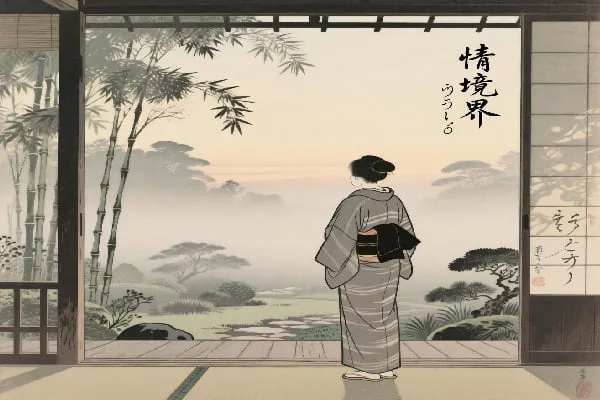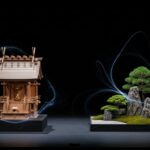The word Jyokyo has gained notable attention in recent years, both as a cultural expression and as a digital-era concept. At its core, Jyokyo represents a dynamic blend of tradition and transformation — a term deeply rooted in Japanese linguistics but evolving rapidly in the online and creative world.
In this article, we explore the meaning, usage, and modern relevance of Jyokyo, including how it connects to art, media, and social interpretation. Whether you are a language enthusiast, a cultural researcher, or a digital content creator, understanding Jyokyo offers a deeper glimpse into how words evolve across time and technology.
Understanding the Origin and Meaning of Jyokyo
The origin of Jyokyo comes from Japanese linguistic roots, often associated with the concept of “situation,” “circumstance,” or “state of affairs.” In the Japanese language, the term can describe the context of an event or the flow of a moment — something that changes depending on emotion, setting, and cultural backdrop.
In modern conversation, Jyokyo extends beyond literal meaning. It represents a fluid condition of reality, capturing the feeling or energy of a particular time or situation. In creative industries, such as film, literature, and visual arts, the word is often used to express mood or narrative tone.
| Aspect | Description | Example Usage |
|---|---|---|
| Linguistic Root | Derived from Japanese terms referring to “situation” or “context” | “The jyokyo of this scene is tense and emotional.” |
| Cultural Meaning | Reflects atmosphere or societal mood | “The jyokyo of post-war Japan influenced art deeply.” |
| Digital Usage | Symbolizes trending or viral phenomena online | “This meme perfectly captures the jyokyo of internet culture.” |
Jyokyo in Traditional and Modern Culture
In Japanese tradition, Jyokyo was often used to describe emotional landscapes — the subtle moods that define a person’s experience or an environment’s feeling. In literature, poets used Jyokyo to paint vivid emotional imagery that connected human emotion with nature and circumstance.
However, as Japan entered the digital age, Jyokyo evolved into something broader and more modern. It started to describe social situations in digital culture, such as viral trends, emotional atmospheres in online communities, and the changing tone of media communication.
This transition shows how language adapts to technology — a recurring pattern where words once confined to traditional expression now find new meaning in modern networks.
The Digital Impact of Jyokyo
In online contexts, Jyokyo has become symbolic of emotional connectivity in the digital era. It reflects how people collectively experience online events — whether it’s a viral trend, a major announcement, or a global moment of shared empathy.
Social media users use the word to describe the current online “vibe” — a real-time snapshot of internet mood. For example, during global events, users might post or comment about “the jyokyo” to capture the collective sentiment spreading across platforms.
| Platform | Use of Jyokyo | Example Scenario |
|---|---|---|
| Twitter (X) | Describes viral trends and moods | “The jyokyo today feels chaotic but fun.” |
| Captions aesthetic or emotional posts | “This sunset photo fits the jyokyo of calmness.” | |
| Discusses online culture or community tone | “The jyokyo of this thread is nostalgic.” |
This table highlights how the term transcends linguistic barriers and becomes a universal emotional code in digital spaces.
Jyokyo and Emotional Storytelling
Storytellers and digital creators increasingly use Jyokyo as a creative narrative tool. Whether in short films, web novels, or visual design, it serves as a lens for emotional storytelling.
By focusing on the mood and feeling of a scene, creators can build stronger connections with audiences. The concept of Jyoyo helps frame storytelling not just through action or dialogue but through emotional resonance.
For example, a filmmaker might describe a scene by saying:
“We need to capture the jykyo of loneliness here — the silence, the lighting, the absence of motion.”
This illustrates how functions as a creative philosophy, emphasizing subtle emotional cues that define human experience.
The Psychology Behind Jyokyo
Psychologically, Jyoky aligns with the concept of emotional atmosphere — a cognitive and sensory understanding of how people perceive environments. Studies in emotional psychology suggest that people are sensitive to the “tone” of situations, which directly affects their mood and behavior.
Thus, Jyokyo isn’t just a linguistic or cultural idea — it’s a psychological reality. It captures how humans feel space, emotion, and context.
| Psychological Element | Relation to Jyokyo |
|---|---|
| Emotional Awareness | Sensing mood and tone of situations |
| Environmental Perception | Reading the “energy” of a place |
| Collective Emotion | Shared moods within social groups |
This psychological link makes Jyoky a powerful concept for understanding emotional dynamics in both personal and digital spaces.
Jyokyo in Art and Design
In modern art and design, Jyoyo has become a philosophical theme that influences how creators think about aesthetics. From minimalistic Japanese architecture to cinematic design, the term represents balance, atmosphere, and emotion.
Designers use to express harmony between emotion and environment, often through texture, light, and movement. For example:
-
In architecture, is reflected through natural light and open space.
-
In photography, it’s shown through framing and tone.
-
In music, it emerges through tempo, silence, and resonance.
The creative world interprets as a form of emotional intelligence in design — an understanding that good design isn’t only visual but also felt.
Jyokyo and Global Influence
Beyond Japan, the concept of Jykyo has begun influencing global culture and creativity. As people search for deeper emotional meaning in a fast-paced digital world, the term represents mindfulness, sensitivity, and awareness.
Content creators, digital artists, and cultural thinkers around the world use Jyoyo to describe emotional quality and depth — qualities often missing in algorithm-driven spaces.
This shows that Jyoko has transcended its origin to become part of global emotional literacy, bridging East and West through shared understanding of emotion and context.
Why Jyokyo Matters in the Modern World
In today’s interconnected society, Jykyo reminds us of the importance of emotional awareness and empathy. Whether in relationships, online communication, or artistic expression, recognizing the “situation” or “mood” around us allows for more thoughtful and meaningful interaction.
It encourages us to:
-
Observe the emotional tone of environments.
-
Communicate with empathy and understanding.
-
Create content that resonates with shared human experience.
Through Jyoko, we reconnect with the essence of emotional presence — the ability to live and respond meaningfully within each moment’s context.
Conclusion
The journey of Jyokyo — from a traditional Japanese term to a global digital expression — reflects the evolution of human language and emotion. It symbolizes how deeply interconnected our experiences have become and how important it is to recognize emotion as context.
Whether used in design, storytelling, or online communication, Jyoko serves as a gentle reminder: every situation carries a feeling, and every feeling defines our shared reality.
Understanding is not just learning a word; it’s learning a worldview — one that values awareness, empathy, and creative harmony.






